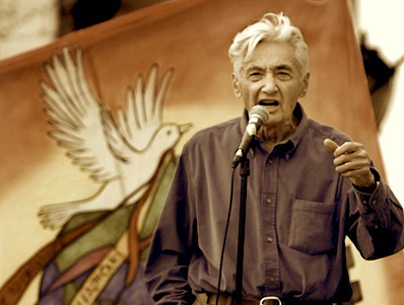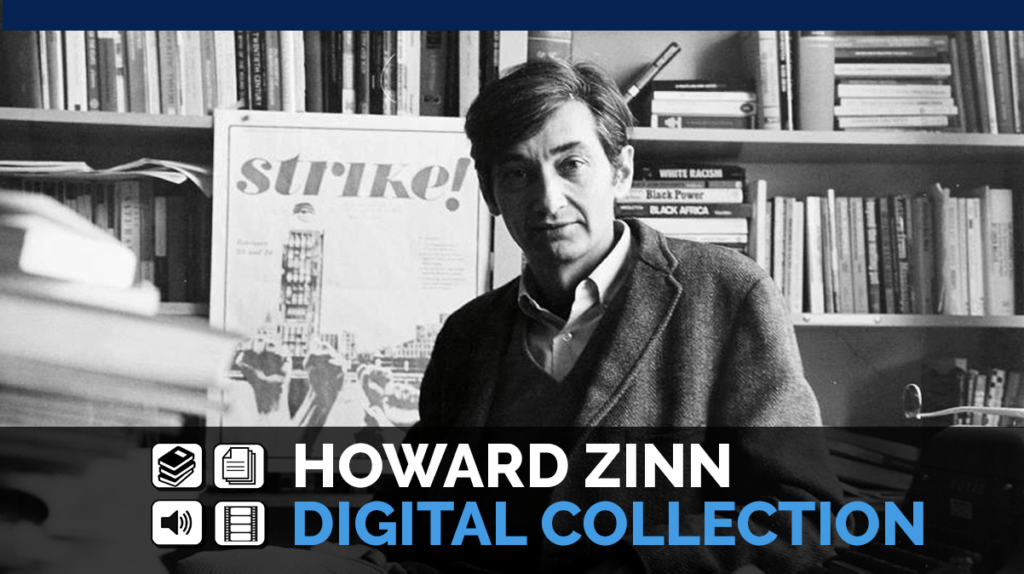By Alison Kysia
 Since the death of historian Howard Zinn in 2010, a number of scholars and politicians have targeted Zinn’s work in an effort to undermine his influence among educators.
Since the death of historian Howard Zinn in 2010, a number of scholars and politicians have targeted Zinn’s work in an effort to undermine his influence among educators.
Most famously, former Indiana Governor Mitch Daniels celebrated Zinn’s death in emails to his education lieutenants and ordered them to find and remove Zinn’s book, A People’s History of the United States, from schools and teacher education programs.
Peter Wood, president of the National Association of Scholars, writing for the Chronicle of Higher Education, applauded Daniels’ attempts at censorship when he said: “Daniels’s four e-mails . . . are a window into the frustration of American conservatives with the quotidian anti-Americanism of the academy.” Wood goes on to reference Sean Wilentz, a professor of history at Princeton University, in a statement he wrote for the Los Angeles Times after Zinn’s death, disparaging his work: “What he [Zinn] did was take all of the guys in white hats and put them in black hats, and vice versa.”
Arguably, the most thorough attack on Zinn appeared in the American Educator. In the article, “Undue Certainty: Where Howard Zinn’s A People’s History Falls Short,” Sam Wineburg, professor of education at Stanford University, insists that Zinn’s work is just as problematic as traditional textbooks in that “A People’s History and traditional textbooks are mirror images that relegate students to similar roles as absorbers—not analysts—of information, except from different points on the political spectrum.” Zinn succeeds at relegating students to a position of passivity, according to Wineburg, by manipulating the historical record to fit his ideological perspective—a people’s history, the deliberate inclusion of perspectives ignored in histories that celebrate power. Wineburg contends that Zinn cannot practice honest scholarship precisely because of this perspective—that an ideological commitment to a people’s history necessarily reduces students to a leftist but no less totalitarian mindset. For these reasons, Wineburg warns, educators should be careful about using Zinn’s work in the classroom.
Continue reading at the Zinn Education Project.



